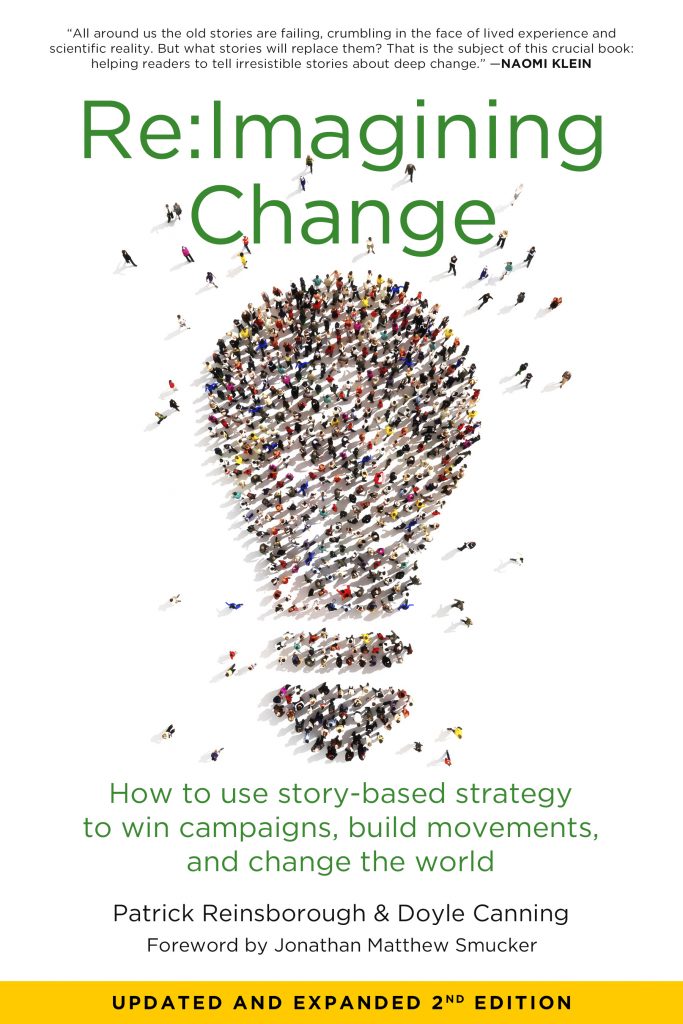
By Jennifer Sherer
Labor Studies Journal 37 (1): 127–140
Today’s labor activists have much to gain from a fuller understanding of how narrative theory and mass communication relate to political power and movement building. Though activists should not expect to learn all they might want to know about these relationships from Re:Imagining Change, the book provides a useful introduction for those newly considering how hegemonic cultural narratives shape the terrain on which they organize. The book successfully makes a case that activists must consciously work to reshape this terrain by disrupting dominant narratives and creating viable new ones.
Grounded in the environmental justice movement, the authors of Re:Imagining Change are co-directors of SmartMeme, a nonprofit whose mission is to “build movements and amplify the impact of grassroots organizing with new strategy and training resources, values-based communications, collaborations, and meme campaigning” (136). For a labor audience, the book’s focus on case studies from eco-justice campaigns may be instructive. Segments of the labor movement have indeed already benefited from adoption of innovative approaches—such as corporate campaigns employing tactics such as street theater, “brand busting,” or “culture jamming”—popularized by global justice activists.
Potential readers should be forewarned that the book’s content does not fully live up to the promise of its title. The text is long on admonitions to “use story-based strategies” but relatively short on explanations of how to do so. Reinsborough and Canning pack the text with specialized terminology (later collected in a glossary) and relatively sophisticated tools (grids and worksheets) for analyzing narrative components in relation to particular power struggles. They don’t, however, share their own stories of the processes they or their clients might typically employ when applying these tools. For example, in one of the “how to” sections of the book we are told that the “hard work” of developing a “framing narrative” requires “creativity, experimentation, and collective commitment”; that such a narrative must adhere to a “common narrative logic”; and that groups must be vigilant about “matching [not mixing] metaphors” and “choosing the right meta-verb[s]” to match a particular “action logic” (60-3). Just one good story illustrating how an organization might in practice engage brainstorming or decision making on these items could have helped demystify the book’s jargon and its application.
The book’s other unavoidable limitation is that terrain-shifting stories generated by powerful new social movements—from 2011’s Arab Spring to Occupy Wall Street—may have fundamentally altered the communications landscape the book aims to describe. The book offers little analysis of the role of the Internet in relation to corporate-controlled mass media and no discussion of social media.
Despite its limitations, Re:Imagining Change makes a valuable contribution to rais- ing contemporary activist consciousness of the role cultural narratives play both in maintaining existing power relations and unleashing human potential to change them. The book serves as a welcome reminder that to make real change, “movements need to nurture a culture of strategic innovation,” (107) take risks, and articulate vision- ary alternatives to the status quo. And for a contemporary labor movement too often reluctant to “disrupt dominant narratives” by telling its own proud, visionary stories of what a just world for workers might look like—and tempted instead to seek short-cut “messaging” solutions based on focus-grouped talking points too often designed to reinforce dominant narratives—there may be no such thing as too many reminders of the inseparability of stories and power.






